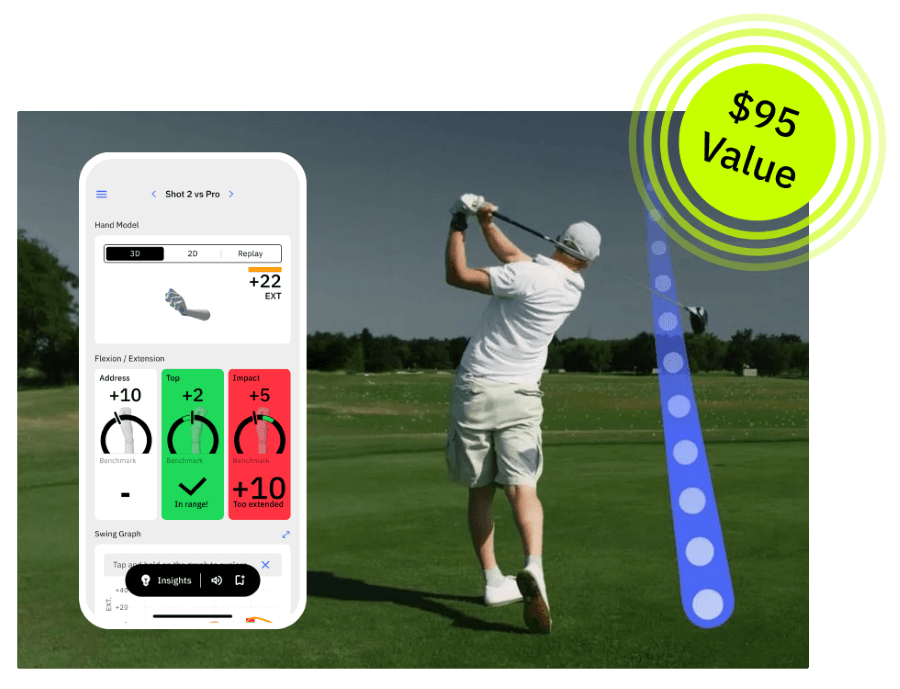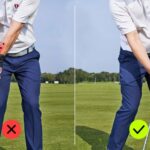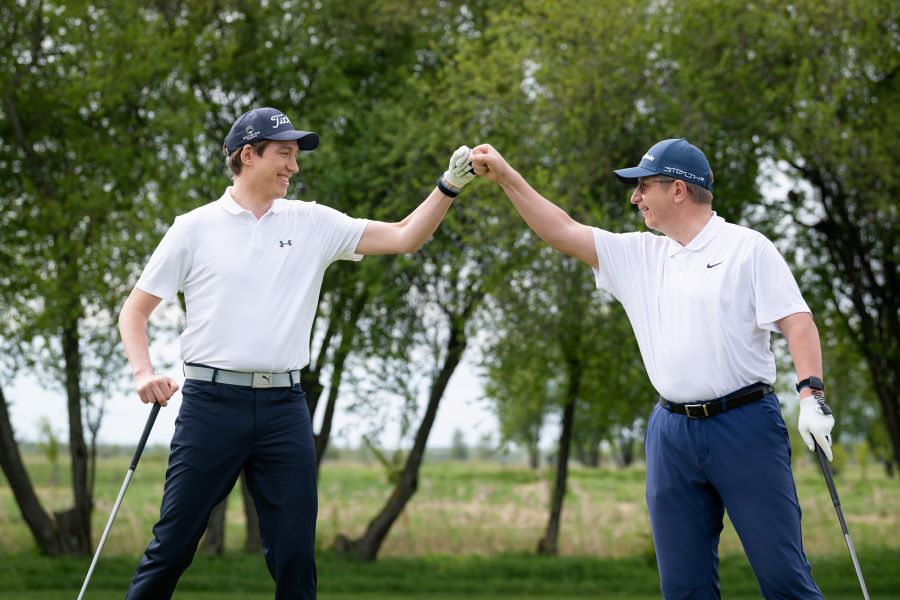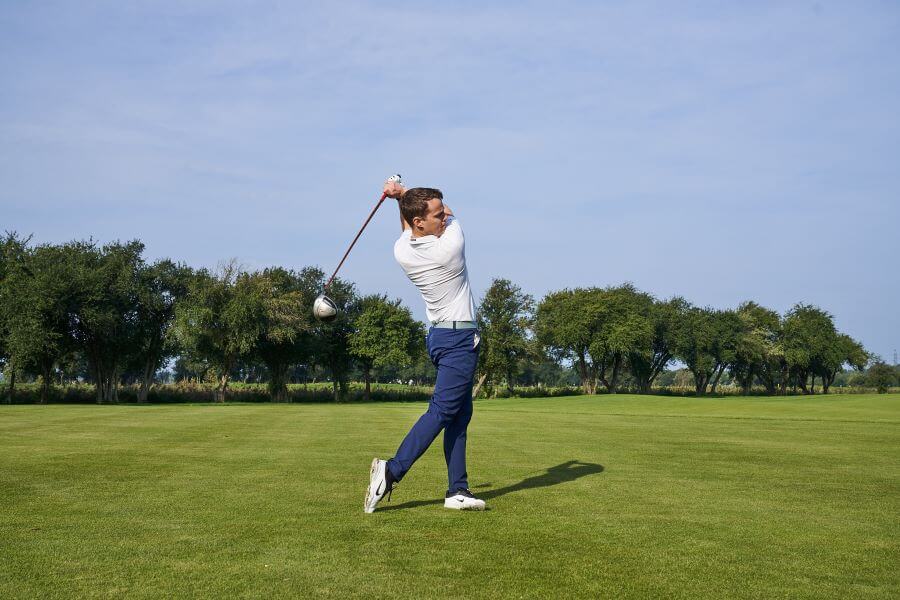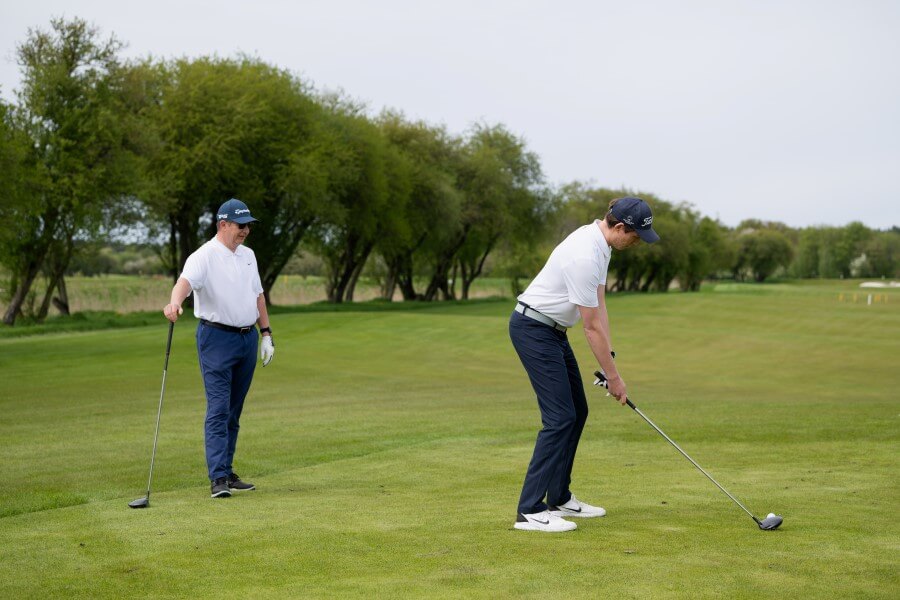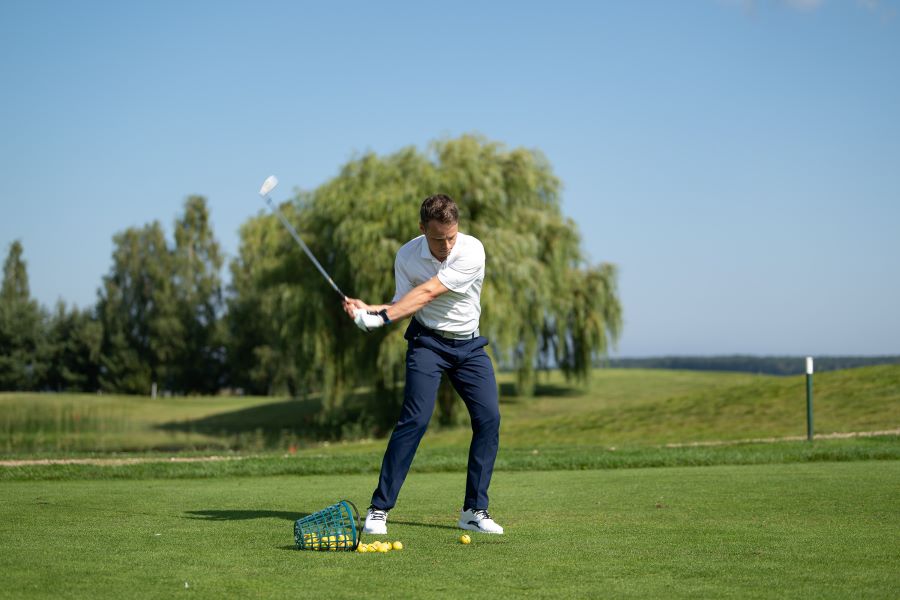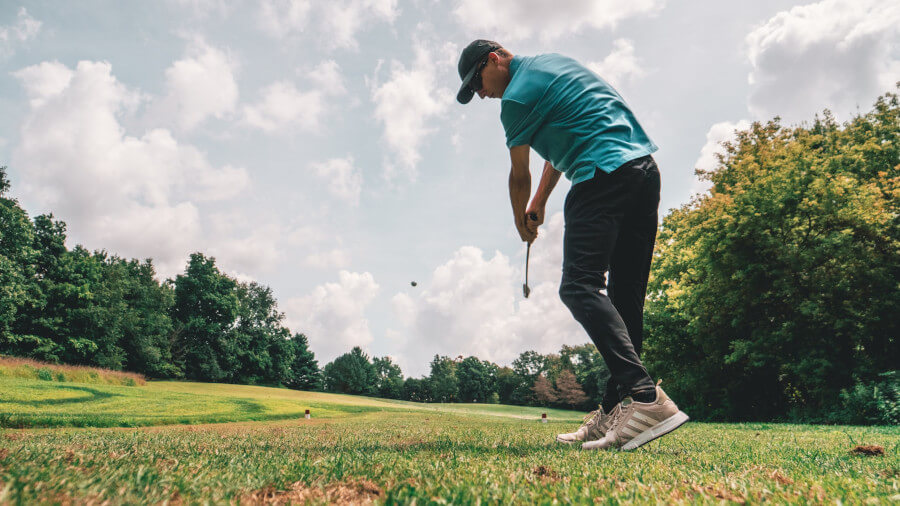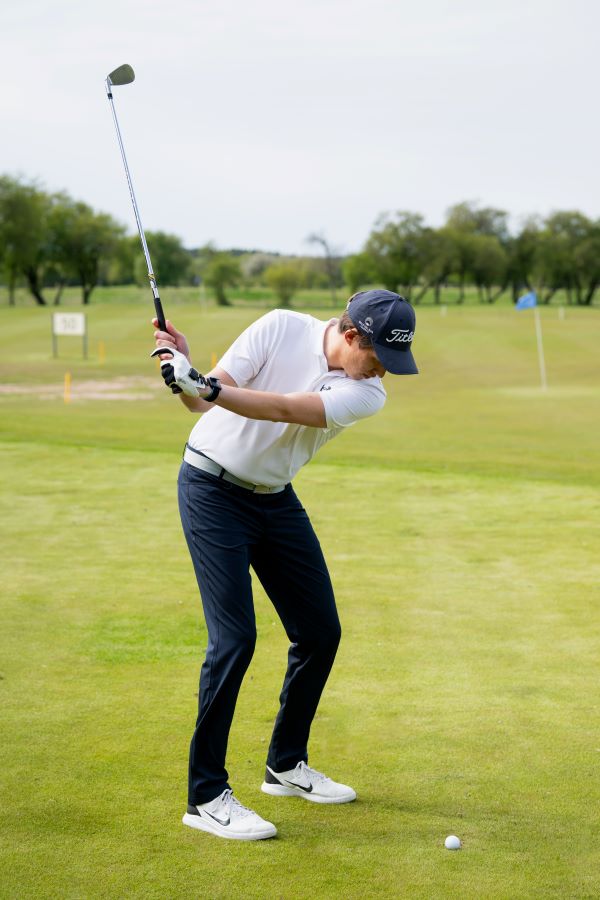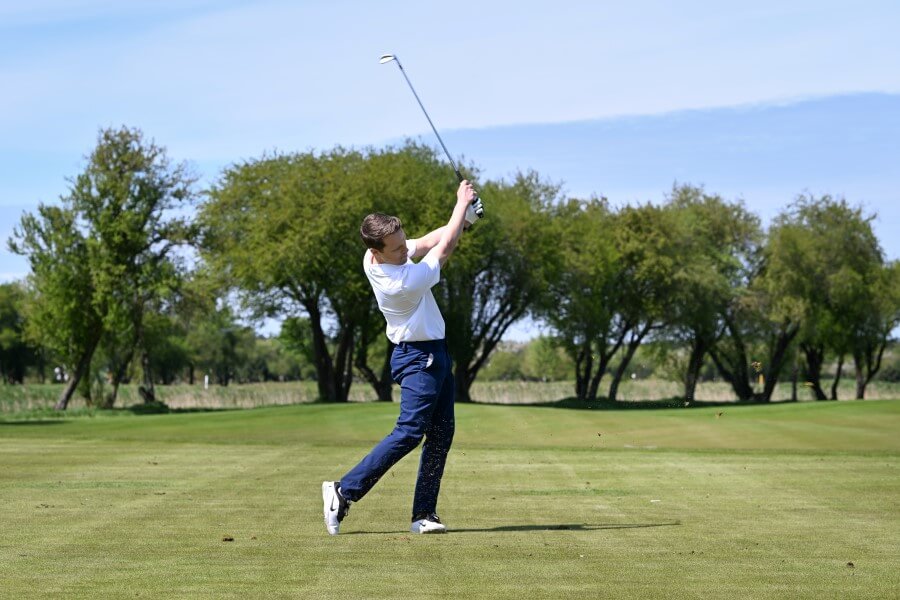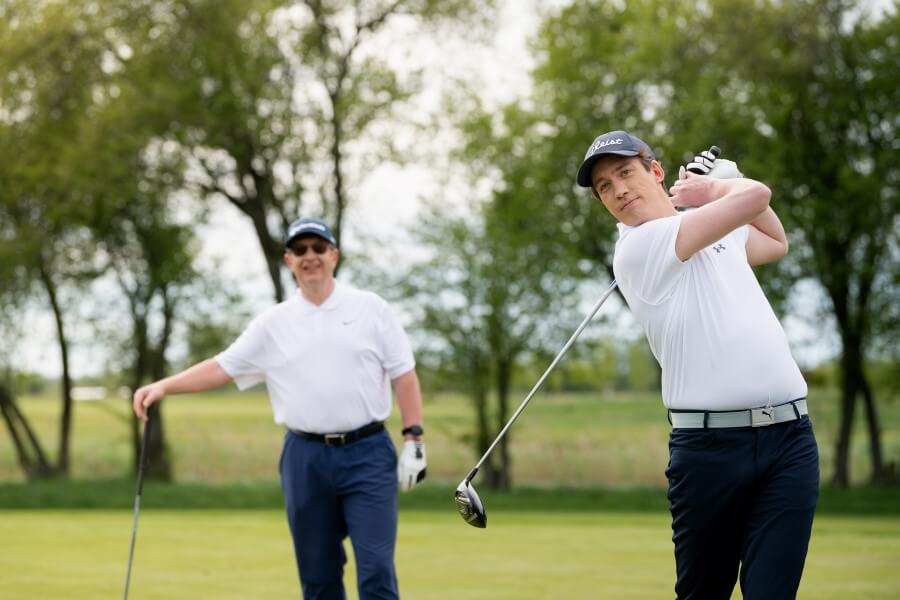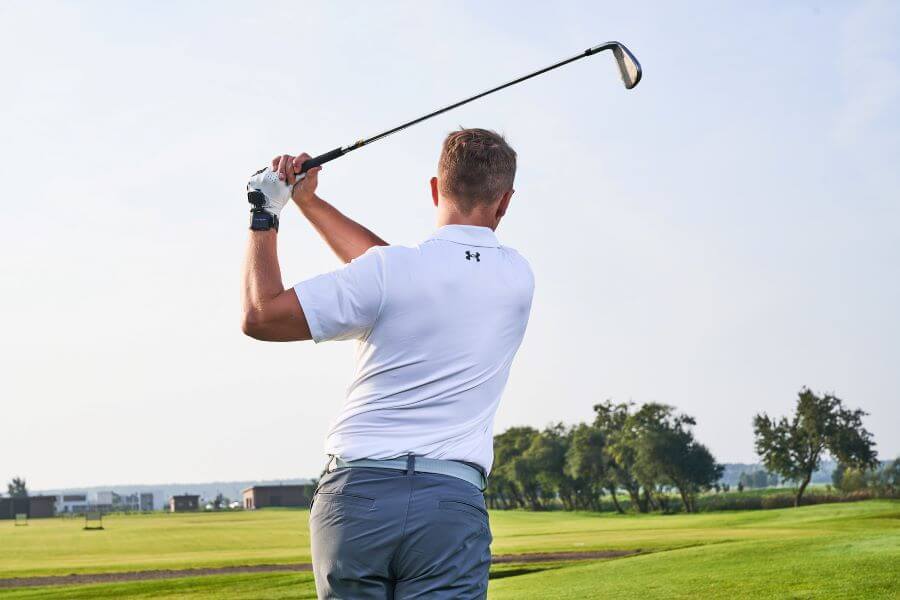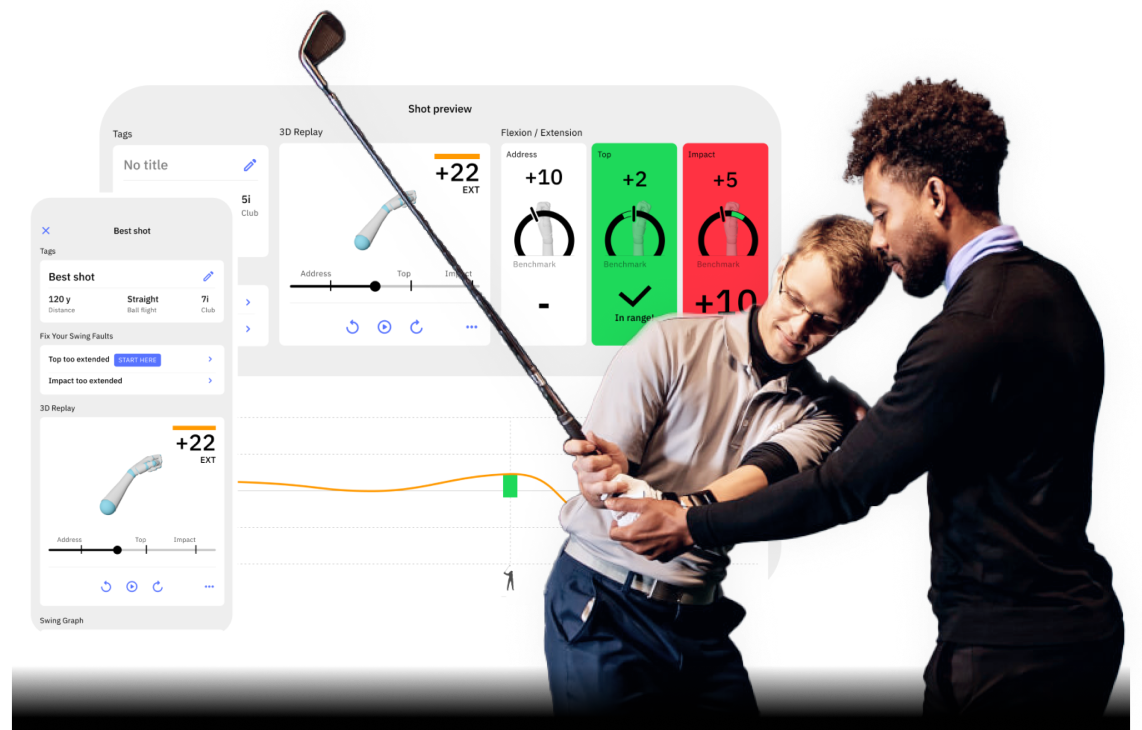10 Proven Tips to Increase Your Clubhead Speed and Add More Distance
Want to hit it farther without overhauling your swing?
Increasing your clubhead speed is one of the most effective ways to gain distance and you don’t need to be a tour pro to do it. A faster swing means longer drives, shorter approach shots, and better scoring opportunities.
In this guide, we’ll walk through 10 proven ways to boost your clubhead speed, from improving wrist mechanics with HackMotion to making small adjustments in your setup, sequencing, and even your gear.
The Best Way to Increase Clubhead Speed (Key Takeaways)
If you don’t have time to take a deep dive into increasing clubhead speed right now, here are the most important things to keep in mind.
- Extend the hand path length by dropping your lead foot back and opening your toes at setup.
- Flatten the lead wrist angle at the top to improve rotation through impact.
- Maximize hip and shoulder rotation to gain momentum on the downswing.
- Reduce grip pressure to enhance wrist hinge.
- Rotate wrists through impact to generate added speed just before impact.
- Focus on smooth rhythm and tempo to optimize the transition from backswing to downswing.
- Wear your HackMotion as you practice to ensure your wrist action is accurate throughout the swing; it’s like bringing your coach with you to the range.
Contents
- 10 Tips to Increase Golf Swing Speed
- 1. Increase Hand Path Length
- 2. Shallow the Club
- 3. Optimize Hip and Shoulder Turn
- 4. Strengthen Core Golf Muscles
- 5. Reduce Grip Pressure
- 6. Rotate Wrists Through Impact
- 7. Warm Up Before Your Round
- 8. Train Smooth Rhythm and Tempo with Feedback
- 9. Fix Casting to Unlock Real Speed
- 10. Use Equipment That Matches Your Speed and Swing Style
- FAQs
- Final Thoughts
10 Tips to Increase Golf Swing Speed
Take a look through these top 10 tips to increase clubhead speed. Following them in order will help ensure you have all your bases covered.
We’ve also included drills and videos to reinforce what you need to do to improve.
1. Increase Hand Path Length
The longer you can make your golf swing, the easier it is to generate power and distance.
Think of it like swinging a hammer. A short swing may not be enough to hammer a nail down, a bigger swing should do it without a problem.
The same applies to golf.
To increase your hand path length, take a stance with both toes pointing out a bit. When the toes are pointed out, you increase your ability to rotate. Now, take your trail foot and drop it back slightly.
This new position creates a lot of room in the backswing to be able to get your hands further around you without rotating or adding extension to the lead wrist.
2. Shallow the Club
Shallowing your club on the downswing positions the clubface as far as possible from the impact zone.
This leaves your club with more room to gain momentum on the downswing and maximize velocity leading into contact.
Sergio Garcia provides the leading example of how to shallow the club. When he reaches the top, it looks like he is pulling a chain down.
This action prompts him to drop his arms into place and use the momentum of this hip and shoulder turn to power the clubface down to the golf ball.
Given the momentum he builds up through rotation and the distance the clubface has to travel, he generates exceptional clubhead speed. Prime Sergio can deliver an average of 120 mph driver swing velocity.
A great drill to work on this concept is the motorcycle drill.
Motorcycle Drill – Master Wrist Flexion in the Downswing
Focus on continuously adding flexion until the club reaches parallel, then smoothly complete your swing.
Motorcycle Drill – Step by Step
- Wear your HackMotion device and start the Motorcycle Drill in the drills section to get real-time feedback and guidance.
- Take your normal setup and then swing to the top of your swing.
- When making the transition from backswing to downswing, feel as though you make a “revving” motion with your lead wrist as though you were revving a motorcycle.
- This movement adds more flexion to your lead wrist and works on shallowing the path and squaring the clubface.
3. Optimize Hip and Shoulder Turn
Hip and shoulder rotation is essential to maximize wind-up on the backswing and generate momentum on the downswing.
Without a decent turn, you leave your arms to do the heavy lifting. The arms alone are not capable of the heavy lifting!
A lack of turn on the downswing also makes it challenging to keep your club on the path and square the face at contact for straight shots.
4. Strengthen Core Golf Muscles
Your core muscles comprise the lower back, pelvic muscles, and glutes. These muscles must remain flexible and in optimal shape to activate during your swing for superior power.
Implement golf muscle exercises into your workout routine to keep them as flexible as possible.
In addition to getting more speed, you’ll also protect yourself from injury.
There’s a reason Bryson picked up yardage when he got stronger.
5. Reduce Grip Pressure
Reduced grip pressure enhances your control of the golf club and frees you up to activate the wrist hinge on the downswing.
Excessive grip pressure prompts tense muscles, causing them to contract and restricting your ability to hinge your wrists. An increased grip pressure creates a chain reaction as it causes your forearms to tense, and later, your chest joins in.
When these body parts are rigid, you lose rotation, power, and wrist hinge on the downswing, causing a weak strike and a loss of distance. Start by taking some swings with the lightest grip pressure possible, then gradually increase until you find the perfect amount.
While you are working on grip pressure, don’t forget about grip position.
Use the HackMotion to see how consistently you grip the club. Check the amount of extension you have in your lead wrist each time you grip the club.
6. Rotate Wrists Through Impact
Bryson DeChambeau provides a perfect example of how increased clubhead speed and proper wrist mechanics can improve distance.
His ability to generate speed and power comes from an efficient “rotation release,” a term coined by Coach Scott Cowx.
This rotation allows him to transfer power from his wrists to the golf ball at impact, maintaining speed through the shot.
- At Address: Bryson’s wrists are positioned at -13 degrees of flexion due to his forward shaft lean.
- At the Top: He maintains wrist stability during the backswing and transitions into 11 degrees of extension at the top.
- At Impact: His wrists move into a flexed (bowed) position, requiring significant rotation to square the clubface.
This transition from extension to flexion is the foundation of his power. By rotating his wrists properly, Bryson ensures he doesn’t lose velocity at contact and can achieve optimal distance and control.
If you want to learn to get better at rotating your wrist, try the HackMotion Release Drill in the HackMotion app.
Perfect Your Release with HackMotion
Fine-tune your release for consistent contact. Start with a short swing to master control before adding power.
HackMotion Release Drill – Step by Step
- Swing the club from first parallel (backswing) to first parallel (follow-through).
- Focus on flexing your hands more at impact than at setup.
- Aim for at least 10 reps, with 50% of swings within the desired range.
- Once consistent, add speed to your swings for increased power and efficiency.
This drill ensures proper release mechanics and helps golfers maximize both distance and accuracy over time.
7. Warm Up Before Your Round
Stretching and warming up before your golf round is essential for loosening up your core muscles and enabling them to deliver optimal rotation and power in your swing.
If you don’t normally warm up, try this.
Take the driver out of your bag, and grab the club head so the grip is closest to the ground. Use
the club head weight and swing the shaft back and forth to awaken your core muscles and optimize shoulder and hip turn.
Many golfers don’t reach peak distances until they reach the 5th or 6th hole, which could be due to a lack of time spent warming up.
8. Train Smooth Rhythm and Tempo with Feedback
Erratic tempo kills consistency. If your swing sequence is off, especially at the top, you lose the ability to generate and release stored power.
A smooth, balanced tempo helps you transition better and maximize clubhead speed through impact.
Here’s how to train it with purpose:
- Start with movement at setup: Avoid a frozen, rigid stance. Instead, adopt a dynamic address position—slight waggles and soft foot motion—to promote natural flow right from P1.
- Hold your finish: A simple but powerful checkpoint. After each shot, hold your follow-through until the ball lands. If you can’t stay balanced, you’re likely swinging out of rhythm.
- Use HackMotion to measure your tempo: The HackMotion wrist sensor provides real-time feedback on your rhythm and helps you stay within optimal tempo ranges used by elite players.
9. Fix Casting to Unlock Real Speed
Casting the club, releasing your wrist angles too early in the downswing, is one of the biggest killers of clubhead speed. When you lose leverage, you lose power and control.
The fix? Train your wrists to retain angle longer into the downswing, using HackMotion’s Casting Drill.
The sensor provides real-time feedback, allowing you to feel the difference between early release and proper lag.
Fix Your Casting with HackMotion
Train to fix casting by generating power with your core and lower body.
HackMotion Casting Drill – Step by Step:
- Wear your HackMotion and select the Casting Drill in the app.
- Take your swing to the top and hold. HackMotion will vibrate when your wrist position is correct.
- Begin your downswing slowly, keeping your lead wrist flexed and trail wrist extended to maintain the angle between your lead arm and the shaft.
- Focus on hitting the ground after maintaining the angle, ball, and then turf contact.
- Once you can repeat the move slowly, begin hitting real shots.
- Review your HackMotion feedback and make any necessary adjustments.
Once you eliminate casting, you’ll gain more efficient shaft lean and better compression, two key factors that contribute to increased clubhead speed.
10. Use Equipment That Matches Your Speed and Swing Style
The right gear can unlock clubhead speed you didn’t even know you had. Two areas to focus on are shaft weight and length.
- Lighter shafts help you swing faster with less effort. If your current shaft is too heavy, you’re likely losing speed before the club even gets near the ball.
- Longer shafts increase swing arc, which can result in higher clubhead speeds—but only if you can still control them.
Most amateurs swing drivers between 80 and 95 mph. For that range, a 45–50g shaft with a slightly longer length may help boost speed without sacrificing control.
And don’t forget swing weight, how heavy the club feels during the swing. If the club feels like a sledgehammer, it’s probably costing you speed.
Get a proper fitting. Modern launch monitors can show you exactly how different shafts and clubheads affect your speed, ball flight, and efficiency. A small tweak can lead to major gains.
FAQs
How to increase clubhead speed without losing accuracy?
You can increase clubhead speed without losing accuracy by producing lighter pressure, shallowing the club on the downswing, and optimizing hip and shoulder turn.
What is a good clubhead speed?
84 to 96 mph is a good clubhead speed for a driver if you are an average golfer.
Naturally, we all desire to swing the driver over 105 mph like a tour pro, but that is not always possible for all players.
Will a lighter shaft increase clubhead speed?
Yes, a lighter shaft will increase swing speed because it is easier to release from the top of your backswing and accelerate on the way down. A lighter shaft will not always improve accuracy.
What are the most important muscles in the golf swing?
The most important muscles in the golf swing include the hip flexors, pectoral muscles, lead-side lat muscles, and forearms.
All these muscles are responsible for boosting hip and shoulder rotation and keeping control of the clubhead throughout your swing.
Final Thoughts
Our guide to increasing clubhead speed emphasizes the importance of maintaining proper wrist position and enhancing hip and shoulder rotation. Besides generating optimal turn on the downswing, you require strong core muscles, lighter grip pressure, and rotated wrists through impact in order to increase clubhead speed.
The best solution requires attention to your swing mechanics mistakes, rotation, and wrist position. Use HackMotion and the associated drills to guide you while you practice your golf game on the driving range, and you’ll quickly see how important the wrists can be in generating power.
